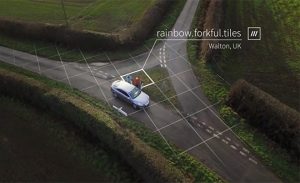Use your mobile phone to find your location in an emergency
In an emergency, you often need to accurately know where you are and share this with the emergency services. This article is inspired in 2020 by one of our cadets, whose dad had a cycling accident in the local woods and broke his neck. The ambulance took an hour to get to them.
Without using the location from a mobile phone, the ambulance crew could have taken even longer to find them. So make sure you can use your phone to find your location, as you never know when you might need it and you may save a life.
Mobile phone GPS. Most mobile phones have an accurate GPS receiver that can provide a location. If you have a clear view of the sky, your phone can be accurate to less than 10 metres, but in built-up areas, woods or similar, the GPS location may be less accurate (perhaps 30 to 50 metres).
This page describes 3 ways to use your mobile phone to identify where you are. These are:
You can then shared your location using a voice call, text message or other method.
1. Lat/Long
The first method uses your phone’s built-in map application to provide a latitude and longitude, also known as lat/long or GPS coordinates. See the article on Wikipedia for a good explanation about lat/long.
Lat/long shows as 2 long numbers and 4 decimal places give a position within about 10 metres. e.g. 50.7954, -1.1085 is just outside the Spinnaker Tower in Portsmouth. 50.9065, -1.3897 is outside the Ticket Office at St Mary’s Stadium in Southampton. 51.5016, 0.0045 is by the main entrance to the O2 arena in London.
The order of numbers matters and the minus sign must be included, so it’s 50.7954, -1.1085 in Portsmouth, not 50.7954, 1.1085 in the English Channel or -1.1085, 50.7954 in the Indian Ocean. You can enter these lat/long coordinates into most online maps to quickly find a location. Where’s 50.8574, -1.2457?
Find Lat/Long in Google Maps (from Google Support)
- On your Android phone or tablet, open the Google Maps app.
- Touch and hold an area of the map that isn’t labeled. You’ll see a red pin appear.
- You’ll see the coordinates in the search box at the top.
Find Lat/Long on Apple Maps (from iDownload Blog)
- Launch the Maps app.
- Tap the location arrow in the upper right corner of the screen, and then tap on the blue dot, which represents your location.
- Swipe up on the screen and you should see your GPS coordinates.
2. Grid Reference
All cadets are taught about UK grid references, which describe a location on the Ordnance Survey National Grid. There are many mobile phone apps available that convert the GPS location on your phone to a UK grid reference. Simply open the app on your phone and your current location will be displayed. If possible, select an 8-figure grid reference, which describes a square 10 x 10 metres. A 6-figure grid reference describes a square 100 x 100 metres.
Some suggested apps are linked below, but lots of other apps will do a good job too.
GRID REFERENCE by Arthur Embleton is a really small app for Android that does just what you need it to. ![]()
GPS OS GRID REFERENCE by Tomtrails provides a clear and simple display of OS grid reference. ![]()
OS LOCATE by Ordnance Survey provides a 6-figure grid reference, as well as other information. ![]()
![]()
3. What 3 Words
This is a commercial application that uses three words to describe individual 3 x 3 metre squares. For example ‘stress.rear.wishes’ is just outside the Spinnaker Tower in Portsmouth and ‘courier.cape.skinny’ is outside the Ticket Office at St Mary’s Stadium in Southampton.
This was the app used when the cadet’s dad had a cycling accident and broke his neck. If it wasn’t for “what3words” the ambulance crew may have taken much longer to find them and he might not still have the use of his limbs.

It’s a clever idea and has been used in a number of emergencies, but does divide opinion. Disadvantages include that, unlike lat/long and grid references, W3W doesn’t use openly available standards so if you don’t have the app installed, the 3 words are meaningless . There can also be confusion if different language versions are used as each language uses a different set of words, unlike the numbers in lat/long. So we recommend using lat/long rather than What 3 Words. It takes up less space on your phone too!